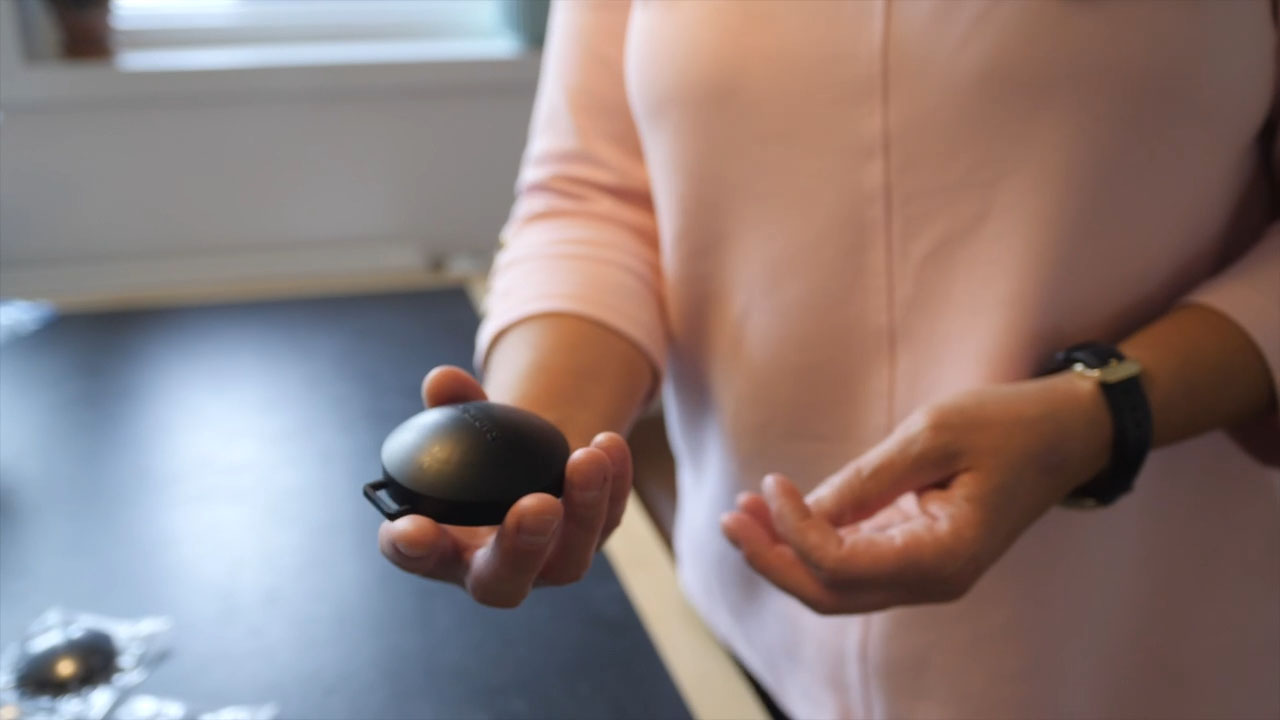Researcher is measuring radon in Greenlandic homes
A group of researchers is looking for people who want to open their homes to them. They would like to measure if Greenlandic homes have too high a concentration of the hazardous gas radon.
By Nicoline Larsen
Violeta Hansen knocks on the door. In her bag, she carries two small, black detectors. They can be used to measure whether the radon concentration in a house is too high. She hopes to install such detectors in homes across Greenland.
“You cannot see radon. You cannot smell radon. You cannot taste radon. But it is present in almost all houses,” says Violeta Hansen, a senior advisor at Aarhus University.
Hazardous gas from the ground
Radon is a radioactive gas that forms in rocks under houses, and from there, it seeps into the homes. This is a problem since radon can cause lung cancer. For this reason, Violeta Hansen and her research colleagues would like to investigate whether radon levels in Greenlandic homes are too high.
“In Greenland, the winter is longer, so we spend more time indoors. That is why it is really important to measure the radon concentration in the homes,” Violeta Hansen explains.
“You cannot see radon. You cannot smell radon. You cannot taste radon. But it is present in almost all houses,” Violeta Hansen
She leads the development of an application for a new research project where, in collaboration with 25 other institutions, she will investigate indoor environments in the Arctic. The researchers will investigate radon, mold, humidity, and climate change to find out what these mean for the health of people in the Arctic.
Looking for participants throughout the country
The researchers will take measurements in homes all over Greenland. Therefore, Violeta Hansen is looking for people from all over the country who want to be involved in the project.

Concretely, this means that you let the researchers set up two radon detectors in your home. It is these detectors, as you can see in the video at the top of the article, that Violeta Hansen carries in her bag. The detectors will be installed on the ceiling of the living room and the bedroom. They have to stay there from October to April.
No reason to worry
However, Violeta Hansen would like to emphasize that there is no cause for concern if the measurements show that the radon concentration in a home is high:
“In case we measure too much radon in your home, we will come and explain the result to you. We have a strong, professional team who will recommend methods to reduce the amount of radon in your home.”
Thankfully, a high radon concentration does not mean you have to move out of your house. Because as Violeta Hansen says: “There are many solutions you can use to reduce the amount of radon in your home.”
Using these solutions can reduce the concentration of radon in your home to a no longer harmful level.
Climate change is worsening the problem
There has never been a nationwide investigation into whether high radon concentrations are a problem in Greenlandic homes. But previous measurements from Asiaq and Aarhus University have shown particularly high radon concentrations in Narsaq. The radon levels there are above the limits recommended by the World Health Organization (WHO).

Unfortunately, the problem only appears to be growing bigger in the Arctic, as climate change could cause the concentration of radon to rise
“Right now, the permafrost acts as a barrier since radon cannot penetrate it and enter homes. But climate change will cause the permafrost to disappear. In the future, this will impact the Greenlandic homes built on top of permafrost, and through that, it will impact our health,” explains Violeta Hansen. This, however, will not be relevant in Narsaq, as there is no permafrost in South Greenland.
The researcher, again, underlines that there is no reason to be afraid. Solutions that can lower the levels of radon exist. But first, of course, it has to be investigated if the problem even exists at all.
_________________________________________________________________________
If you are interested in participating in Violeta Hansen and her colleague’s research project, you can contact her at: hvioletahansen@gmail.com